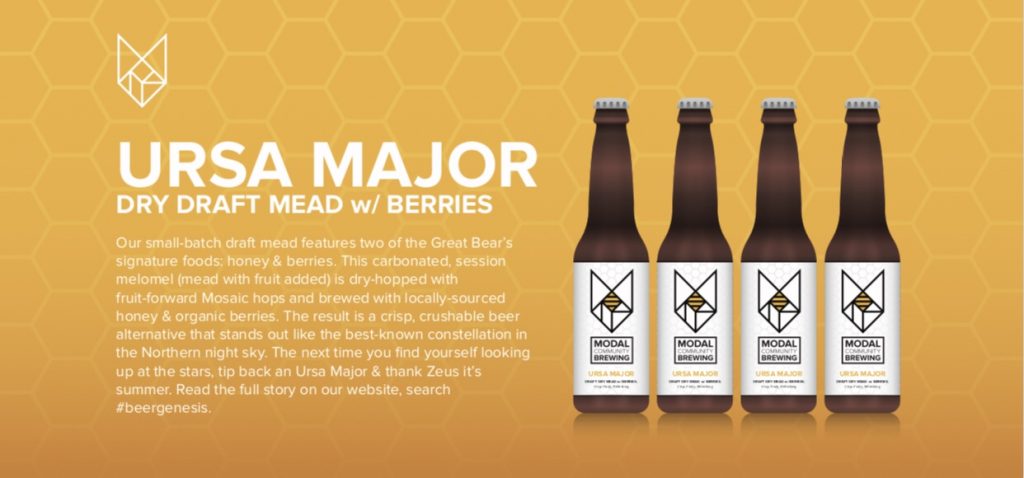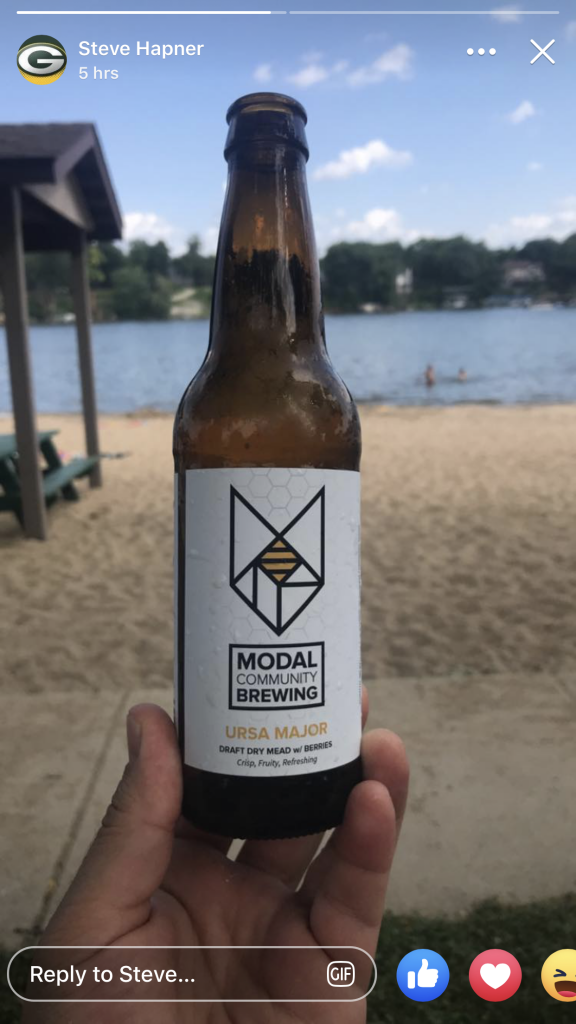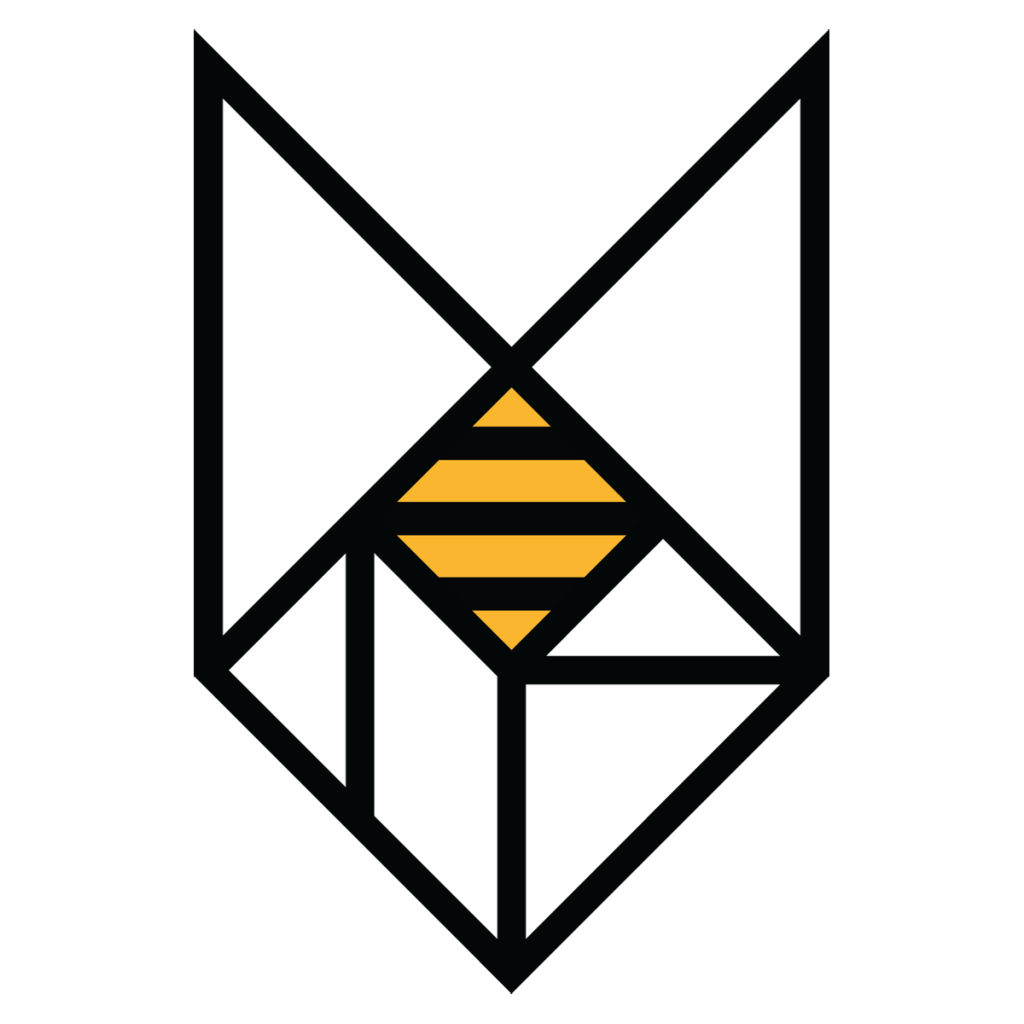This is the story of our Ursa Major Draft Dry Mead w/ Berries.

The recording & organizing of groups of stars as constellations is a prehistoric exercise. Our earliest artifacts designating constellations date back to 3000 B.C. Mesopotamia.
The wonder of these celestial bodies—the power they possess, the greatness of the cosmos juxtaposed against our own relative smallness—has caused humanity to ponder our own finitude since our very genesis. Today, 88 recognized constellations fill the sky seen from our planet’s Northern & Southern Hemispheres.
Like honey bees dancing from flower to flower in a field, our eyes bounce from star to star in the night sky, connecting each shining dot to the next in ancient patterns, retelling the stories told in days long since passed.
The story of Ursa Major, the Great Bear, & the lesser Ursa Minor, originate in ancient Greece. The Greek God Zeus was smitten by the nymph, Callisto; & when Hera, Zeus’ wife, learned of the affair, she transformed Callisto into a bear. Not knowing the bear was Callisto, Callisto & Zeus’ son, Arcas, approached to attack her with a bow & arrow. Zeus prevented her death by turning Arcas into a bear like his mother & placing them, side-by-side, safely forever in the sky.
Our small-batch draft mead features two of the bear’s signature foods: honey & berries. This uniquely-refreshing, carbonated, dry, short melomel features a combination of the very best locally-sourced honey, organic strawberries, blueberries, blackberries & raspberries, & a healthy dose, start-to-finish, of fruit-forward Mosaic hops. The result is a crushable, summer beer alternative that stands out like the best-known constellation in the Northern night sky. The next time life slows down & you find yourself looking up at the stars, tip back an Ursa Major & thank Zeus for summer. #beergenesis #ursamajordraftmead #draftmead #modalmead
BREWED WITH Wildflower honey & Mosaic hops. Fermented on organic blackberries, blueberries, strawberries & raspberries with one of our favorite locally-cultured yeasts.
Okay! Now I get to tell you a bit more about how this batch came to be; and, as always, tell you what went wrong. Every. single. batch. we’ve ever made has presented to us new problems to troubleshoot and solve. I guess that’s part of the fun of it?
I knew we were only making a 5-gallon batch of mead. This was a completely experimental endeavor, although I basically knew what I was doing, in theory, because of all of my other beer brewing experience. How much different could mead be? I thought.
We got right to work.
Many meads are made without boiling any ingredients at all—except maybe the water, if one chooses to pull it from the tap. We boiled ours.
We measured and added our ingredients, but chose not to add our berries until after chilling our must (that’s the word for unfermented mead) down to yeast-pitching temps.
It turns out, we made a measuring error on our honey, and we didn’t add enough during our brew session! I don’t recall our exact figures, but we added ounces as decimals—something like 2.5 lbs + 2.5 lbs instead of 2 lbs 5 oz + 2 lbs. 5 oz. Needless to say, we were off.
It took me a while to wrap my head around what had happened. I spent an hour or so during clean-up processing through it. I ended up adding in additional honey the day after. Disaster averted!
I was hoping the rest of the process would go off without a hitch. Far from it. I mis-measured the yeast stabilizer addition and worried for days about off-flavors, I made a berry concentrate using the same berries as in our original primary fermentation, but added way too much water. And then came time to cold crash and carbonate…

I didn’t prep far enough in advance and didn’t have the CO2 we needed to on hand to even begin the carbonation process. I had to hit up our local gas supplier before they closed for the day at 5 PM. I walked out with a full tank at 4:55. Then, I didn’t properly attach the regulator nut to the tank’s pipe threads. The tank was empty in four days. On a Saturday morning. I lucked out was able to grab a spare tank from our crew member, Matt. I was able to carb up the rest of our batch and bottle off of his tank. Thanks, Matt!
In all, making this mead was definitely a learning process. We made and corrected several pretty significant mistakes and will continue to experiment with minor process changes in future batches. Plus, we hope to roll out new draft meads of varying sweetness. If you get the chance to try a bottle of our Modal Community mead, we think you’ll find it to be a beautifully tasty experiment! We think it turned out pretty darn well!
References:
https://www.artofmanliness.com/articles/15-constellations-every-man-should-know/
https://www.theoi.com/Heroine/Kallisto.html
https://www.space.com/15722-constellations.html
https://en.wikipedia.org/wiki/Constellation
https://www.ducksters.com/science/physics/constellations.php
